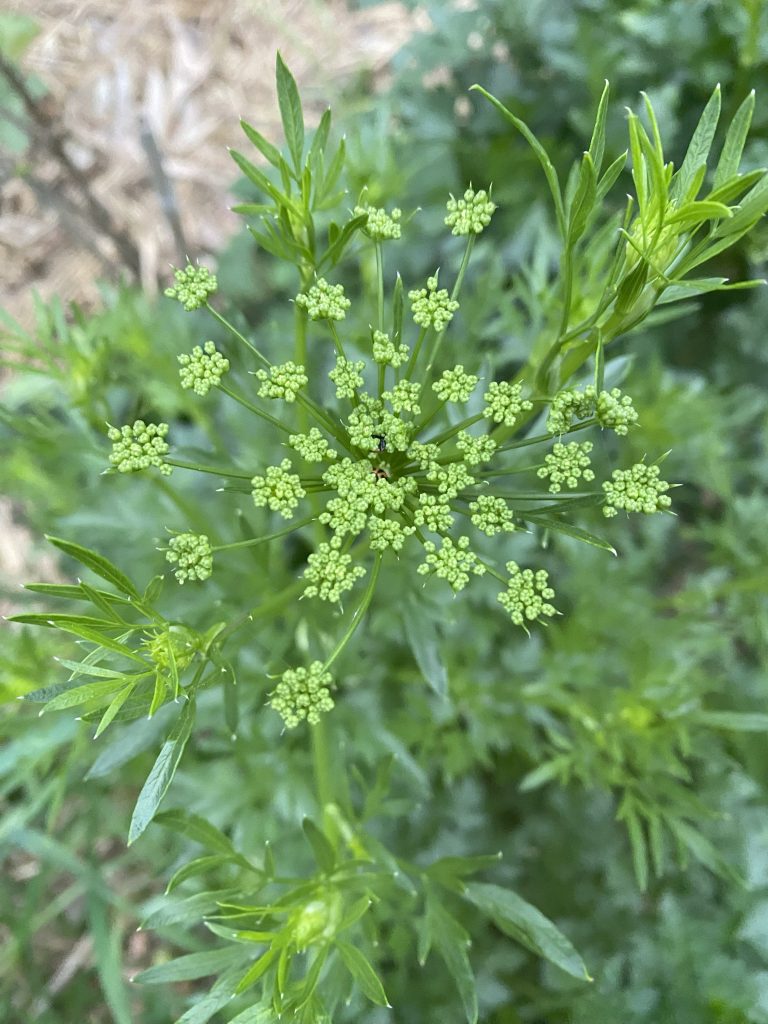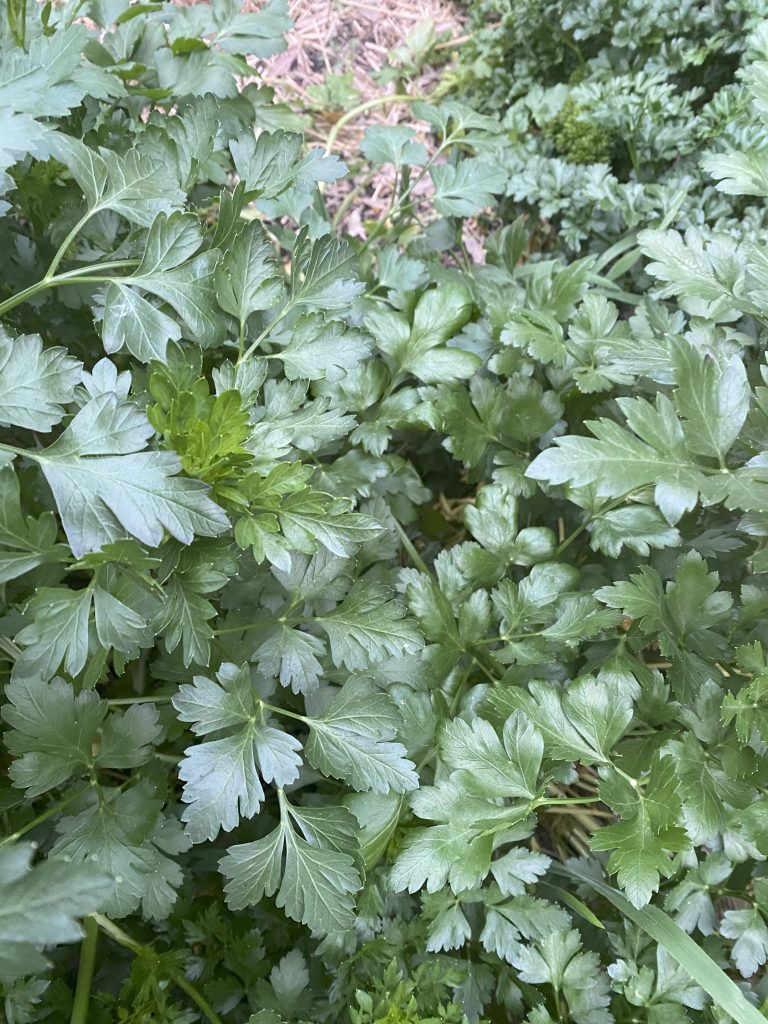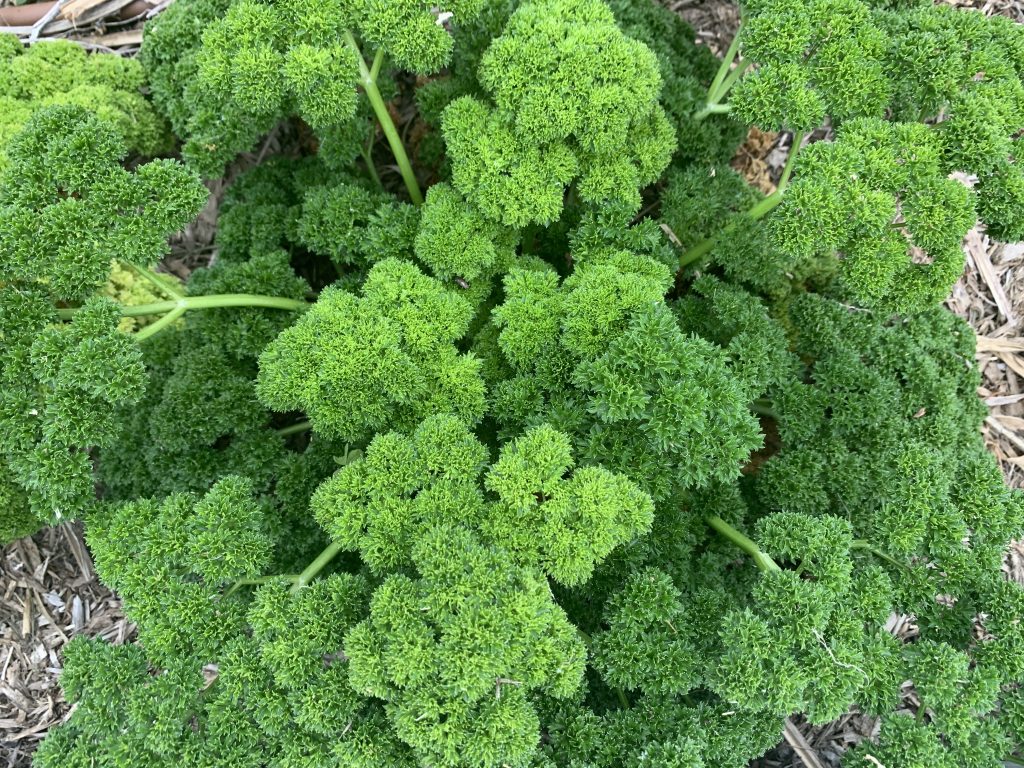Botanical name : Petroselinum crispum
Common name : Parsley, Curly parsley, Italian parsley, Flat leaf parsley, Root parsley, Hamburg parsley
Challenging for seed saving
Lifecycle: Biennial
Pollination: Insect pollinated
Mating system: Each flower in a flower head produces pollen before it is able to accept it. Flowers can pollinate other flowers in the same flower head.
Suggested spacing: 45cm
Seed specific requirements: Vernalisation
Isolation distance: 250 m
Population size: 20 plants
Seed maturity: Seed turn brown or mostly brown and start to detach easily from the plant
Processing method: Dry threshing and winnowing
Expected seed viability: 2 to 6 years



Growing for seed
Like other biennials flowering is initiated by a period of cold. Temperatures under 10 C are needed for most varieties. In Australia parsley can be simply overwintered in the ground.
Sowing of the seed crop should be done before late summer so that the plants can reach maturity before vernalisation. Seed takes a fair while to mature so expect the plants to remain in the ground until mid to late summer before the seed is harvested.
Varieties of parsley must not be allowed to flower at the same time as they are likely to be cross-pollinated by insects. A minimum isolation distance of 250 m between flowering varieties is suggested.
Larger populations of parsley are needed to ensure inbreeding depression does not become an issue. Twenty plants should be considered the minimum if it is intended to keep a seed line going indefinitely. Seed can be harvested from as few as five plants. Regularly bringing in seed from other growers and mixing it with home-saved seed is another way to ensure genetic diversity of the seed stock is maintained.
Selection
Leaf form is usually the main selection criteria. Curly varieties should have any less curled plants removed from the pool. Likewise flat leaved varieties should be selected for a flat leaf form. Other selection criteria include vigorous growth, slow bolting, and for Hamburg parsley the root form.
Any plants that bolt in the first growing season should not be used for seed saving.
Harvest
Parsley produces a central primary flower umbel and then produces secondary umbels around it. The biggest and best seed will be in the primary umbel and get progressively smaller with the later set umbels.
Seeds turn brown as they mature and need to be collected before they shatter into the garden.
Processing
Parsley seed can be dislodged from the flowerheads by either rubbing them between gloved hands or rubbing the head over the mesh of a sieve. Seed can be sieved and winnowed to remove unwanted frass.
Storage
After processing it is a good idea to keep the seed in a paper bag in a dry location for another few weeks to ensure that any moisture being held in the seed by the plant material has a chance to dry off.
There is a fair likelihood that insect pests will have laid their eggs in or on the seed. To stop them in their tracks one of the easiest methods of control is to freeze the seed for a few days. To do this the seed must be absolutely dry first. It then must be placed in a sealed airtight container – like a glass jar – and left in a freezer for 48 to 72 hours to kill pests and their eggs.
Seed is best stored in an airtight container where it is dark, cool and dry.
Contributors
Liz Worth, Nellie Pryke
